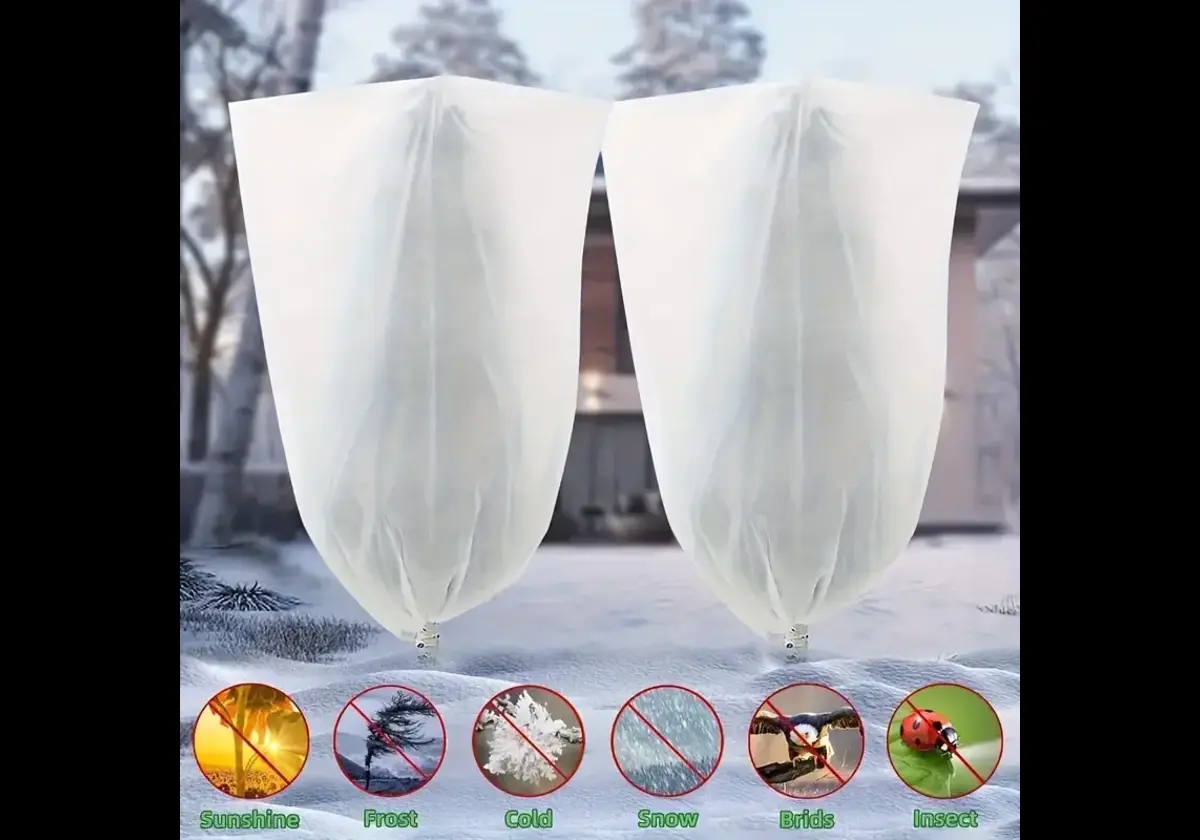Durable Frost Cover for Plants for Cold

California’s climate is famous for its sunny days and mild weather but during late fall and winter temperatures can still drop low enough to harm plants. This is especially true in inland valleys foothills and certain coastal areas where frost events are common. For gardeners and farmers alike one of the most reliable solutions to safeguard crops during these colder months is using frost cover for plants.
These covers create a protective shield that helps maintain warmth reduce frost damage and extend growing seasons. Moreover when paired with durable greenhouses they offer an extra layer of defense against temperature fluctuations wind and other environmental stresses.
This article outlines the seven proven benefits of frost covers for plants along with practical insights on how to integrate them into a California gardening strategy for optimal results.
Protects Plants from Frost Damage
The main reason gardeners use frost covers is to protect plants from freezing temperatures. Frost occurs when temperatures near the ground drop below freezing causing ice crystals to form on leaves stems and flowers. These crystals can rupture plant cells leading to irreversible damage.
Frost covers act as a thermal blanket trapping heat from the soil and preventing frost from settling directly on the plant’s surfaces.
Partnership with Durable Greenhouses
When frost covers are used inside durable greenhouses they create a two layer insulation effect. The greenhouse traps warmth during the day and the frost cover keeps that warmth close to the plants overnight. This method is highly effective for frost sensitive crops like citrus peppers and tomatoes.
Real Life Example
In Fresno County where unexpected frost events can damage citrus orchards farmers often use lightweight frost covers over young trees inside hoop greenhouses. This combination ensures survival rates remain high even during unusually cold winters.
Extends the Growing Season
California’s long growing season is one of its agricultural strengths but frost events can still limit how early crops can be planted and how long they can be harvested. Frost covers help extend this window by allowing planting before the last frost date in spring and harvesting well past the first frost in autumn.
Why It Matters for California Growers
An extended season means higher yields and the ability to supply markets earlier or later than competitors. For crops like strawberries leafy greens and herbs this can translate into significant income boosts.
Evidence from Research
Studies from the University of California Agriculture & Natural Resources show that using frost covers can increase marketable yields by 15 20%. This is due to fewer losses from frost and the ability to harvest over a longer period.
Shields Plants from Wind and Debris
Cold air isn’t the only problem plants face in winter. Strong winds can damage stems break branches and cause dehydration in plants by pulling moisture from leaves. Dust and debris carried by wind can also settle on plants affecting growth and appearance.
Added Greenhouse Protection
When integrated into durable greenhouses frost covers add a secondary barrier preventing drafts from affecting plants and keeping them cleaner. This is especially useful in agricultural regions like the Sacramento Valley where winter winds can be intense.
Maintains Soil Moisture and Reduces Water Stress
Even in cooler months California can experience dry spells. Frost covers help reduce water evaporation from the soil by acting as a semi permeable layer. This not only conserves water but also ensures plants have consistent moisture during cold weather.
Application for Water Conservation
Farmers in drought prone regions often use frost covers in combination with drip irrigation to reduce water usage by up to 30%. The cover’s breathable fabric allows water to pass through while slowing evaporation.
Provides Additional Pest Protection
Although frost covers are designed for temperature control they also serve as a barrier against pests. In California some pests remain active during mild winters especially in southern regions.
Early Season Pest Prevention
Covering seedlings with frost fabric prevents aphids flea beetles and leaf miners from attacking tender shoots before they mature.
Benefit for Greenhouse Crops
Inside durable greenhouses frost covers can help reduce pest pressure even further offering dual protection for high value crops grown organically without chemical pesticides.
Improves Seed Germination and Growth Rates
Frost covers trap warmth close to the soil which helps seeds germinate faster and seedlings establish more quickly. For gardeners aiming for an early harvest this is a crucial advantage.
Why It Works
Warmer soil temperatures accelerate seedling growth and reduce the time from planting to harvest. In cooler northern California regions frost covers can make the difference between a delayed and an early harvest.
Home Gardening Example
Backyard gardeners in Napa often use frost covers over raised beds in late winter to start spinach lettuce and carrots several weeks before the official planting season begins.
Cost Effective and Easy to Use
Compared to other frost protection methods like heaters or full climate control systems frost covers are inexpensive lightweight and reusable.
Tips for Longevity
Choose UV stabilized fabric to withstand California’s sun exposure.
Store covers in a dry place when not in use.
Secure edges with soil stones or stakes to prevent wind damage.
Long Term Value
A single investment in high quality frost covers can last several seasons protecting plants year after year with minimal replacement costs.
Practical Tips for Using Frost Covers in California
Select the right weight: Lightweight covers are best for short term frost while heavier options provide more insulation.
Install before frost warnings: Covers should be in place before temperatures drop to freezing.
Avoid direct contact with leaves: Use hoops or stakes to keep the fabric from touching plant surfaces as frozen fabric can still cause damage.
Combine with greenhouses for maximum effect: Layering covers inside durable greenhouses offers the best frost defense.
FAQs
Q: How long can frost covers stay on plants?
A: Frost covers can remain for several days or weeks during cold spells as long as they are breathable and allow light and water through.
Q: Can frost covers be used year round?
A: While primarily for cold protection they can also be used in summer to reduce heat stress and shield plants from pests.
Q: Do frost covers work in windy areas?
A: Yes but they must be secured with stakes or weights to prevent displacement.
Q: Are frost covers safe for all crops?
A: Most crops benefit from frost covers but always ensure proper ventilation to avoid overheating during sunny winter days.
Conclusion
Using frost cover for plants is one of the most effective ways to protect crops in California’s diverse climate. Beyond frost protection these covers extend the growing season reduce water loss prevent pest damage and improve germination rates. When paired with durable greenhouses they create a powerful defense system that supports healthier plants and higher yields year round.
By adopting frost covers as part of a long term gardening or farming strategy growers can safeguard their investments improve productivity and adapt to unpredictable weather with confidence.




